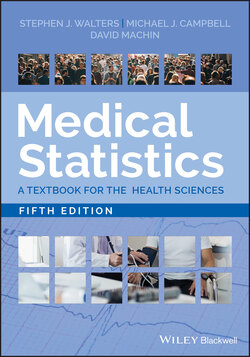Читать книгу Medical Statistics - David Machin - Страница 76
Ratios, Proportions, Percentages, Risk and Rates
ОглавлениеA ratio is simply one number divided by another. If we measure how far a car travels in a given time then the ratio of the distance travelled to the time taken to cover this distance is the speed.
Proportions are ratios of counts where the numerator (the top number) is a subset of the denominator (the bottom number). Thus in a study of 50 patients, 30 are depressed, so the proportion is 30/50 or 0.6. It is usually easier to express this as a percentage (%), so we multiply the proportion by 100, and state that 60% of the patients are depressed. Clearly proportions must lie between 0 and 1 and percentages between 0 and 100%.
A proportion is known as a risk if the numerator counts events which happen prospectively. Hence if 100 students start an introductory statistics course and 15 drop out before the final course examination, the risk of dropping out is 15/100 = 0.15 or 15%.
Rates always have a time period attached. In the UK, 597 206 deaths were recorded in 2016 out of a population of 65 648 100; a death rate of 597 206/65 648 or 0.009 deaths per person per year. This is known as the crude death rate (crude because it makes no allowance for important factors such as age). Crude death rates are often expressed as deaths per thousand per year, so the crude death rate is nine deaths per thousand per year, since it is much easier to imagine 1000 people, of whom 9 die, than it is 0.009 deaths per person!
